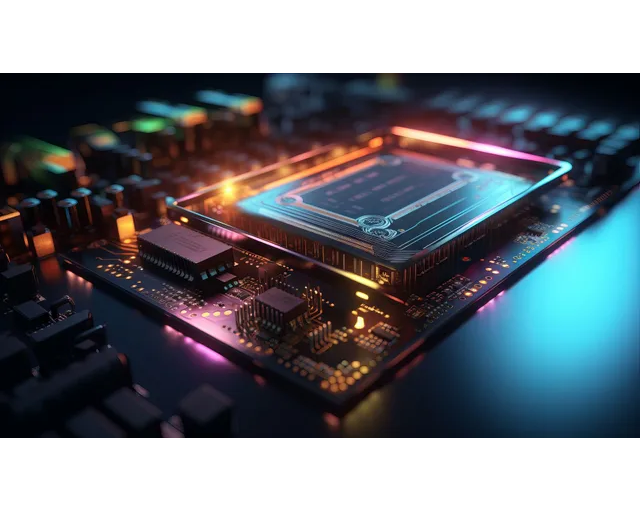
Building a custom PC can be a rewarding and fulfilling experience, offering the flexibility to tailor your machine to your specific needs and preferences.
Whether you’re a gamer, a content creator, or someone who needs a powerful machine for work, understanding the essential hardware components is crucial. This guide will walk you through each component, explaining its role and offering tips on how to choose the best parts for your custom build.
Fusionhardwares is the best place where you can find all types of computer accessories.
Introduction
Building your own PC is a journey that combines technical knowledge with personal preferences. From selecting the right processor to choosing the perfect case, every decision impacts the performance and aesthetics of your final build. This guide will help demystify the process and ensure you have all the information you need to create a custom PC that meets your needs.
The Essential Hardware Components
1. Central Processing Unit (CPU)
The CPU, often referred to as the brain of the computer, performs the majority of processing tasks. It executes instructions from software and coordinates the activities of all other hardware components.
- Choosing a CPU: Consider your primary use for the PC. For gaming, a CPU with a high clock speed and multiple cores, such as the AMD Ryzen 5 or Intel Core i5, is ideal. For tasks like video editing or 3D rendering, a more powerful CPU with additional cores, such as the AMD Ryzen 9 or Intel Core i9, would be better suited.
2. Graphics Processing Unit (GPU)
The GPU handles all graphics-related tasks, making it a critical component for gaming, video editing, and any work involving high-resolution graphics.
- Choosing a GPU: The GPU market is dominated by NVIDIA and AMD. For gaming, look for GPUs like the NVIDIA GeForce RTX series or the AMD Radeon RX series. For professional workstations, consider GPUs like the NVIDIA Quadro series.
3. Motherboard
The motherboard is the backbone of your PC, connecting all the components and allowing them to communicate with each other. It determines the compatibility of other components and offers various features and expansion options.
- Choosing a Motherboard: Ensure compatibility with your CPU and desired features. Look for motherboards with the appropriate socket type (e.g., LGA 1200 for Intel or AM4 for AMD), sufficient RAM slots, and expansion slots for future upgrades.
4. Random Access Memory (RAM)
RAM is the short-term memory of your computer, used to store data that is actively being used or processed. More RAM allows for smoother multitasking and faster access to data.
- Choosing RAM: For general use and gaming, 16GB of RAM is typically sufficient. For more demanding tasks, such as video editing or running virtual machines, consider 32GB or more. Ensure compatibility with your motherboard and CPU.
5. Storage Drives
Storage is where all your data, applications, and operating system are stored. There are two main types of storage drives: Hard Disk Drives (HDDs) and Solid State Drives (SSDs).
- Choosing Storage: SSDs are faster and more reliable than HDDs. A combination of both can be optimal, with an SSD for your operating system and frequently used applications, and an HDD for additional storage. NVMe SSDs offer even faster performance compared to traditional SATA SSDs.
6. Power Supply Unit (PSU)
The PSU supplies power to all the components in your PC. It’s crucial to have a reliable and efficient PSU to ensure the stability and longevity of your system.
- Choosing a PSU: Calculate the total wattage required by your components and choose a PSU with a little extra headroom. Look for units with an 80 PLUS certification for better efficiency and reliability.
7. Cooling System
Effective cooling is essential to maintain optimal performance and longevity of your components. There are various cooling solutions, including air coolers and liquid coolers.
- Choosing a Cooling System: For most builds, a high-quality air cooler will suffice. For overclocking or high-performance builds, consider a liquid cooling system. Ensure your case has adequate airflow and supports your chosen cooling solution.
8. Computer Case
The case houses all your components and provides airflow to keep them cool. Cases come in various sizes and designs, offering different levels of expandability and cooling options.
- Choosing a Case: Consider the size of your components and your aesthetic preferences. Ensure the case has good airflow, sufficient space for your components, and ease of access for building and maintenance.
9. Peripherals
While not part of the core PC components, peripherals like monitors, keyboards, and mice are essential for interacting with your computer.
- Choosing Peripherals: Select peripherals that suit your needs and preferences. For gaming, look for high-refresh-rate monitors and responsive mice and keyboards. For productivity, consider ergonomic designs and high-resolution monitors.
Conclusion
Building a custom PC involves careful planning and consideration of each component. By understanding the role of each part and how they interact, you can make informed decisions that result in a high-performing, reliable, and tailored machine. Whether you’re building your first PC or upgrading an existing one, this guide provides a solid foundation to help you navigate the process with confidence.